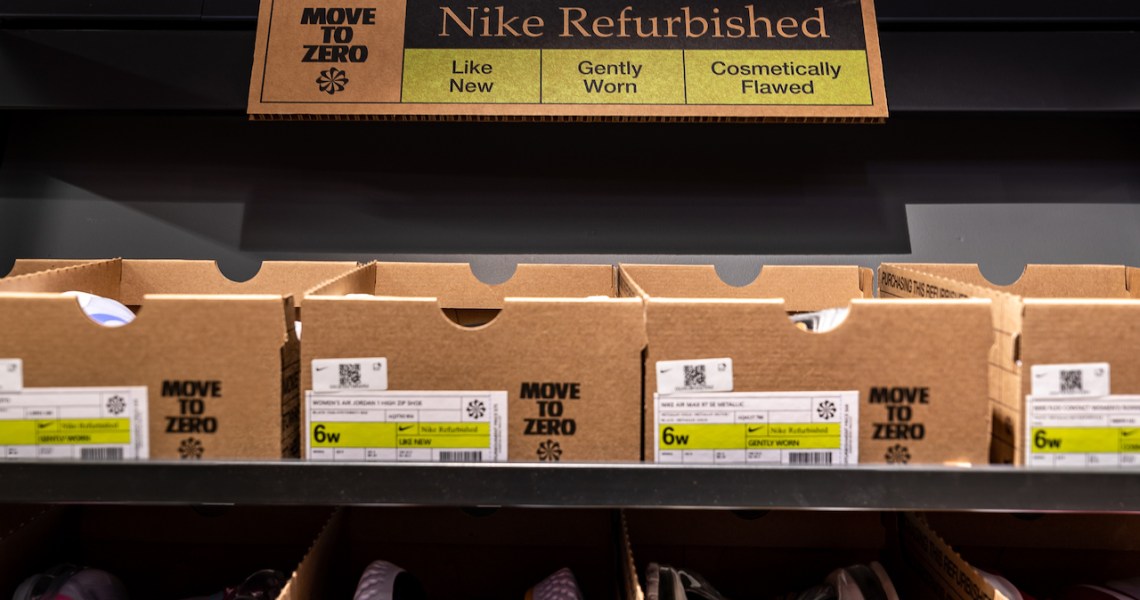Nike saw strong demand in the first quarter of its 2022 fiscal year ending on Aug. 31. Total revenue grew by 16%, with digital sales up 29%, direct sales up 28% and wholesale sales up 5%.
And that was amid increased supply chain complications that even a behemoth like Nike wasn’t able to avoid. In its earnings call on Sept. 23, CEO John Donahoe spoke about some of the issues facing Nike’s global supply chain and how the athleticwear giant is navigating them.
The problems have mainly been twofold, he said. First, shipping times and costs have continued to worsen over the course of the pandemic. Shipping containers have increased in price, while ports remain congested all along the West oast of the U.S. Nike typically expects product to arrive from its factories in 40 days, but now transit times have increased to 80 days.
“So as we finished Q1 with higher levels of in-transit inventory, that means that we had full price inventory that was unavailable to use to serve current consumer demand in this quarter,” Donahoe said on the call. “We would have had an even stronger top-line result if we had more product available to serve that consumer demand. And so these elevated transit times that we’re seeing — we’ve been talking about them now for several quarters — they worsened this quarter and continue to have an impact on our business.”
Secondly, and worse for Nike specifically, is that both Vietnam and Indonesia went back into lockdown, fording several of Nike’s factory partners to temporarily close. Vietnam had one of the best Covid responses in the world in 2020 and cases remained minimal for almost all of 2021, until a surge arrived in late July. Factories there remain closed. Nike’s factories in Indonesia, however, are back to full production, but are still suffering from the lost time they were under lockdown.
More than half of Nike’s apparel factories are in Vietnam, and the brand has already lost more than 10 weeks of production time due to the lockdowns. While the most recent quarter wasn’t terribly affected by this, future quarters certainly will be.
Nike could go the way of some other big companies like Walmart and look to take some shipping into its own hands to alleviate the first problem. But shut down factories is a much more difficult challenge to circumvent. The scale of Nike’s business ($37 billion in 2020) means rapid production is necessary to meet demand. The most likely solution could be to diversify where it produces its products. Right now, 80% of the company’s footwear factories are in South Asia.
Ad position: web_incontent_pos1
“Some brands are moving points of production much closer to points of sale, and we are seeing several brands take much greater control of logistics processes, including through acquisition,” said Dave Bruno, director of retail market insights at retail tech company Aptos. “By evolving design and supply chain processes, brands can move merchandise planning much closer to the selling season, resulting in more accurate investments, allocations and replenishment, as well as better alignment with customer expectations.”




